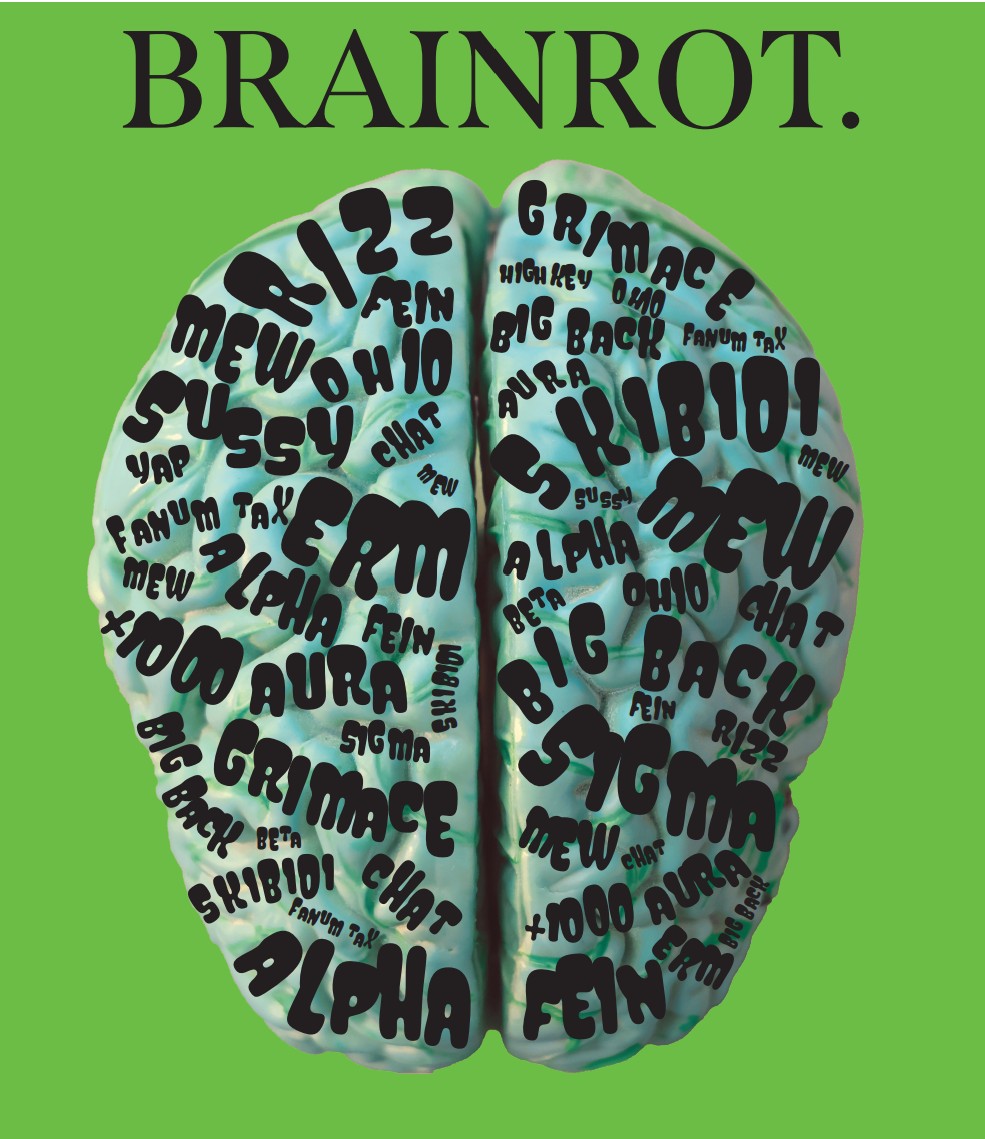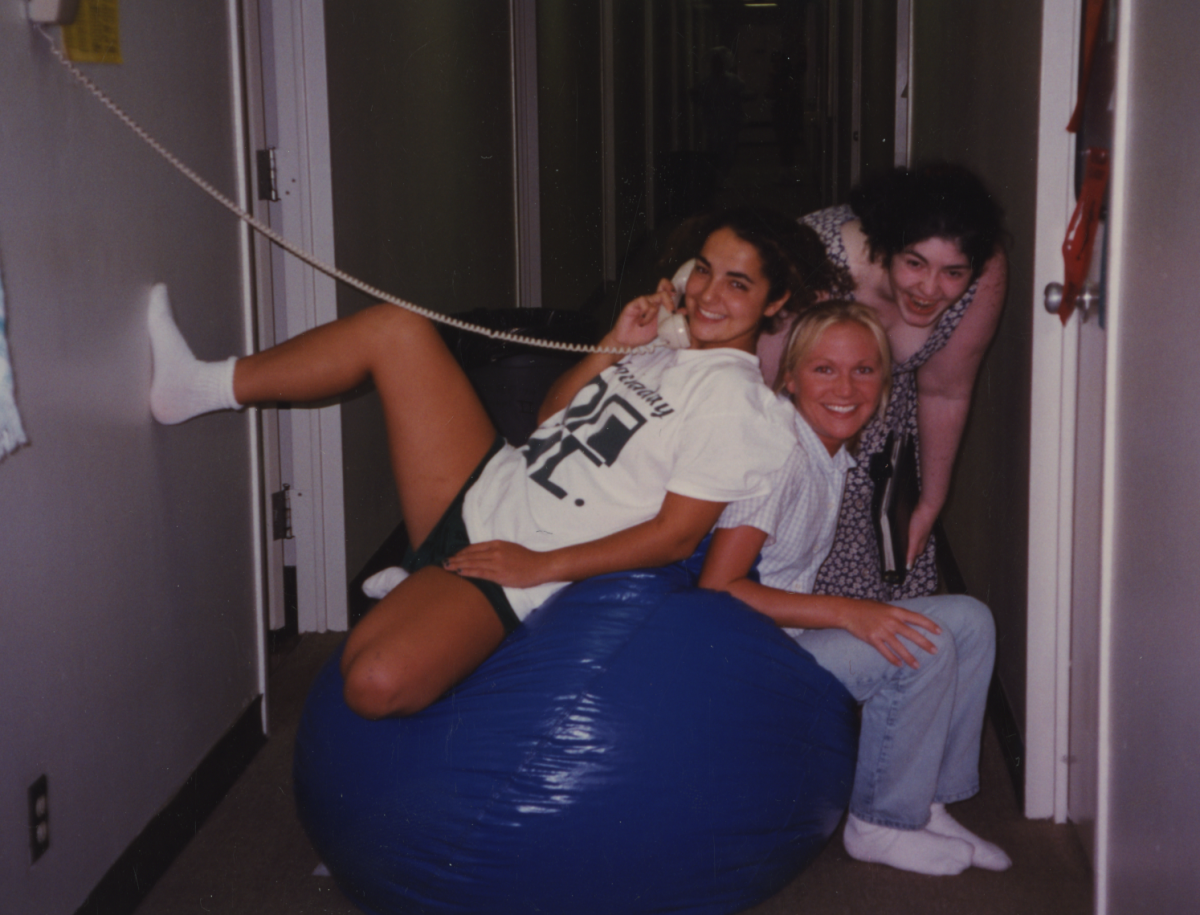The Hockaday Fourcast ventures into the psychology behind the Ebola hysteria, the media’s role in fueling the flames and how the Hockaday administration has dealt with the crisis in order to minimize its participation in the hysteria.
Over 50 years ago, Dallas made international headlines for the assassination of President John F. Kennedy. Last month, the city made international headlines again. The first case of Ebola in the United States was diagnosed at Texas Health Presbyterian Hospital in Dallas. Reaction and hysteria erupted across the country.
On Oct. 2, Navarro College in Corsicana, Texas, denied admission to Nigerian applicants solely due to the Ebola outbreak in their country, according to press reports by CNN. However, at the time the rejection letters were sent to these applicants, Nigeria had not reported a case of Ebola in more than 21 days.
On Oct. 16, a passenger on American Airlines Flight 2325 from Dallas to Chicago, who vomited into the aisle of the plane, was ordered to stay in the lavatory to keep her isolated from other passengers.
In the month of October, several businesses and schools in Ohio were closed in what government and university officials said was an “abundance of caution” in response to nurse Amber Vinson’s Ebola diagnosis and knowledge of her possible contacts in Ohio.
These are just a few examples of the public’s reactions brought by a fear of Ebola.
Elaine Whittaker, M.D., who specializes in internal medicine and works at Presbyterian Dallas, was involved in the care of the first diagnosed Ebola patient in the U.S., Thomas Eric Duncan. Duncan contracted the disease while caring for a pregnant woman stricken with Ebola in Liberia. Within five days after flying to Dallas on Sept. 20 from the West African country, Duncan developed early symptoms of Ebola.
Elaine Whittaker’s daughter, Hockaday senior Olivia Whittaker, said that her mother had to sign a contract “that basically says they’re not allowed to fly for a period of time and they’re not allowed to go to places where people congregate such as grocery stores, or schools, parks, movie theaters, things like that.”
As a result of Duncan’s diagnosis, it was reported by CNN on Oct. 17 that there were 600 empty hospital beds at Presbyterian Dallas. The hospital has been losing patients and money as a result of the public panic. It recently hired Burson-Marsteller, a global public relations and communications firm, to help reestablish the hospital’s image and restore trust after its handling of the U.S.’s first Ebola case.
Texas Health Resources Public Relations Manager Stephen O’Brien recently said that he could not talk about how the hospital is doing currently, but he said, “I would just say this. Any hospital that deals with any kind of crisis may suffer some slippage, but they always come back.”
Hysteria surrounding the Ebola epidemic has been alarming, according to healthcare professionals, who are more aware of the science behind the medical condition than the general public. President Barack Obama recently hosted at the White House a group of volunteers who treated Ebola patients in Africa and delivered a message to the public asking people not to panic. He also expressed confidence that Ebola could and would be controlled.
A Psychological Viewpoint: Diagnosing the Hysteria
A psychological complexity belies the public anxiety.
Kristen M. Ohlenforst, Ph.D., a therapist specializing in cognitive behavioral therapy at Therapy Dallas, said that the public hysteria is a result of catastrophic thinking.

“Although what’s happening in the U.S. is, by psychological definition, not mass hysteria, we’re seeing lots of catastrophic thinking,” Ohlenforst said. “Catastrophic thinking is a type of cognitive error in which we assume that the worst outcome will come to pass. In this sense, catastrophic thinking is actually a defense against our fears of the worst possible scenario. We like to think that by assuming the worst, we can be prepared for the worst even though this is not necessarily the case.”
Ohlenforst said that people tend to feel more fearful when there are only a few readily identifiable victims.
“Research has shown that our fear tends to be higher when we can put a face or name or photograph to a small number of identifiable victims, as compared with simply envisioning hundreds or thousands of nameless or faceless victims,” Ohlenforst said.
In addition, according to Ohlenforst, people are able to feel a connection and draw inferences about similarities with those few readily identifiable victims, and thus, feel that they are much closer to the threat than they may actually be.
And this is why Americans panic more about the four individuals in the U.S. who have contracted Ebola than about the 4,400 and counting who have died from the Ebola outbreak in Africa.
The hysteria is a result of people having inherent fears of the unknown.
“Anxiety about the unknown can often be more uncomfortable and debilitating than actually dealing with what’s known,” Ohlenforst said.
Before Duncan was diagnosed with Ebola, there was not much fear in the U.S., even though thousands were dying in West Africa.
“We tend to be very like, I don’t want to say ‘me me me me,’ but we tend to be more concerned when something’s at our doorstep,” history teacher Tracy Walder, who discussed the topic of Ebola in her AP Comparative Government and Spycraft classes, said. “It’s sort of like ‘out of sight, out of mind.’”
This lack of concern is driven by a lack of fear for a virus that has afflicted so many “faceless, nameless” people in a distant part of the world, which Ohlenforst said makes the crisis feel “less overwhelming, less personal, and more detached.”
Ohlenforst said that once a person infected with Ebola arrives in Dallas “you begin to fantasize that the connection will actually put you in danger, even though it may be just as unlikely that you would come into contact with the bodily fluids of a quarantined patient in Presby Dallas as it would be that you had come into contact with the bodily fluids of a person in Africa.”
For Elaine Whittaker, the hysteric reaction was a result of the characteristics specific to Ebola.
“Ebola Virus Disease has the perfect ingredients for creating hysteria: infectious, nasty symptoms, high mortality, no cure,” Elaine Whittaker said.
And, according to Elaine Whittaker, the Ebola epidemic reminded many people of the AIDS epidemic, which years ago was also a cause of hysteria.
“These events brought the images close, too close, reminds me of HIV/AIDS 20 to 25 years ago before effective antiviral treatment was available to most patients,” she said.
The public frenzy can lead to a lack of proactiveness.
In her AP Comparative Government class, Walder said the topic of Ebola came up in a discussion about the government of Nigeria, one of the six core countries that the class covers.
A student had tweeted an article to the class Twitter page about Nigeria controlling Ebola, and the class discussed the government’s methods in controlling Ebola and its proactiveness, “versus how some first world countries cannot figure it out.”
Walder said that U.S. agencies “tend to be proactive as a result of a reaction,” while in Nigeria, “the minute that people started to become sick with Ebola, they took very, very, very drastic measures,” as there had been multiple Ebola outbreaks there before, and for Nigeria, Ebola had become a “reality” rather than a “fear.”
A Medical Viewpoint: Looking at the Bigger Picture
From an epidemiological point of view, Ebola is difficult to catch.
According to the Centers for Disease Control and Prevention, Ebola is spread through direct contact with blood or body fluids of a person who is currently sick with Ebola, objects contaminated with the virus and infected fruit bats or primates.
The risk of contracting Ebola, Elaine Whittaker said, is zero, unless someone has come into direct contact (skin, mouth, eyes and nasal mucous membranes) with the body fluids of a person infected with Ebola or items contaminated with those bodily fluids.
“The more ill the person is with EVD, we believe the more infectious they are,” Elaine Whittaker said.
She said that the worry level should be low unless somebody plans to travel to West Africa or a country with widespread cases of Ebola.
Olivia Whittaker, who takes Walder’s AP Comparative Government class, posted an article listing the threats to an average American. Ebola is listed ninth, while “tip-over,” the flu, climate change, and traffic accidents are listed eighth, sixth, fourth and second respectively, with heart disease and cancer topping the list.
While only one Ebola patient has died in the United States and more than 4,400 individuals have died in Africa and Europe, in some years the flu virus and its complications kills more than 30,000 people in the U.S. alone. Upper School science teacher Barbara Fishel, Ph.D., said that contracting the flu during the flu season is easier than contracting Ebola.
“And yet, this causes significantly less anxiety, and we know this to be the case, because there are millions of people who could benefit from getting a flu shot, and choose not to,” Ohlenforst said.
According to the CDC, in 2012, the latest year that statistics are available, 55 percent of children ages six months to 17 years, 74 percent of adults ages 18 to 49 and 57 percent of adults ages 50 to 64 did not receive an influenza vaccination.
And this, Ohlenforst said, ties back once again to the idea that people are not as anxious and fearful when the victims are many and not readily identifiable.
According to a survey sent out to the Upper School, 47 percent of students who responded said they were “not scared at all,” 49 percent said they were “a little scared,” and 4 percent said they were “scared for their life.”
These results show that Hockaday students are better informed about the details of Ebola than the general public. However, it is important to be informed from reliable sources.
The Media’s Role in the Hysteria
The media plays a significant role in providing a wide variety of information to the general public.
“Knowing the facts about how the disease is spread can help an individual more accurately assess whether they are at any risk for contracting the disease,” Ohlenforst said.
Fishel agrees with Ohlenforst’s statement.
”The more you know about something, the more you are informed, the more you can decide for yourself whether you have to be worried or not,” Fishel said. “To just be scared because you heard a rumor, that doesn’t make sense.”
Ohlenforst said that researching and finding facts about Ebola can drastically reduce one’s anxiety and reshape one’s thinking.
However, the media has exacerbated the public’s anxiety by focusing on and emphasizing what cannot be controlled.
Eugene McDermott Headmistress Kim Wargo, who earned a bachelor’s degree in journalism from Louisiana State University, said that in a 24/7 news cycle, “there are news channels that are on all day, every day, and there has to be something to put on those news channels to keep viewers, because viewers are what bring advertising, and advertising is what pays the bills, and advertising is what makes these companies a profit.”
“I think the media sort of played on the scary numbers without necessarily focusing on the actual facts about how it’s transmitted, and that led to a lot of, what I would call, irresponsible journalism, and there’s a lot of fear out there in the world,” Wargo said.
Ohlenforst agrees with Wargo’s statements.
“At times, very different media sources can be more or less sensationalist, and with the wish to profit and garner additional viewers. Some media sources may present information in a more sensationalist fashion that capitalizes on fear, anxiety, curiosity, confusion, etc.,” Ohlenforst said.
Echoing those ideas, Ohlenforst said she even advises her clients to not do any Internet research unless the research is from a reliable source.
Hockaday’s Approach to the Ebola Crisis
In the past few weeks, the Hockaday administration sent out three letters to the Hockaday community sharing what it knew, referring parents for more information to medical experts and assuring parents it was following the advice of experts.
“What we tried to do in all of our communication was to focus on what we are expert at, which is working with kids, and handling situations that involve students, not trying to present ourselves as medical experts,” Wargo said.
Wargo also believes that having classes, such as Microbiology and Human Diseases, AP Comparative Government and Spycraft, discuss Ebola from different perspectives helps educate Hockaday students about current world events.
“We’re getting into the nitty gritty of viruses, bacteria, just things like that,” Olivia Whittaker, who also takes Fishel’s Microbiology and Human Diseases class, said. She believes that because she is more educated on the topic of Ebola she is “less scared about it, and more secure about it.”
According to the same survey sent out to the Upper School, 54 percent of those who responded that they had taken a class that offered discussion about Ebola said that they were “never scared of Ebola, and taking the class has still made [them] not be scared of Ebola,” 25 percent said that they were “scared before, but taking the class has alleviated [their] fears,” and 21 percent said that they were “still scared.”
Wargo said that in Lower School, she did not hold an assembly because she knew that each family had different policies on how much media their child was exposed to.
“We felt like there would probably be students for whom this would be scary and new information, and we didn’t want to increase anxiety among young children by sharing information,” Wargo said.
Rather, Wargo said that the administration tried to equip the teachers with the ability and knowledge to answer basic questions.
“Our job as teachers is to answer the question that the student asks, but also to recognize what our role is, and what is not, and again I think none of our teachers felt equipped to be medical experts about something like Ebola, so we didn’t want them to be placed in the position of having to teach a lesson on how Ebola is transmitted,” Wargo said.
While older students had more analytical conversations than the younger ones, there was no strict edict given out to teachers. Ebola in Dallas was a learning experience for students and teachers alike.
“I think the approach was really about doing what we do best, which is education, and so that’s going to look different between Lower, Middle, and Upper School, but there wasn’t, I would say, a separate direction given to teachers and the three divisions,” Wargo said.
Dallas is now a city in recovery. It carries the weight as the Ebola capital of the U.S. and the location where a U.S. Ebola patient died. At press time, no other cases of Ebola had been reported in Dallas. The 21-day quarantine period for Duncan’s family and for the people who had contact with him while he was sick, and for the two infected Presbyterian Dallas’s nurses, is over, and the CDC and local health officials believe Dallas to be Ebola-free.
In a recent weekly address to the general public, President Obama said, “If we take the steps that are necessary, if we’re guided by the science — the facts, not fear — then I am absolutely confident that we can prevent a serious outbreak here in the United States.”
And that confidence is now justified.
– Catherine Jiang













